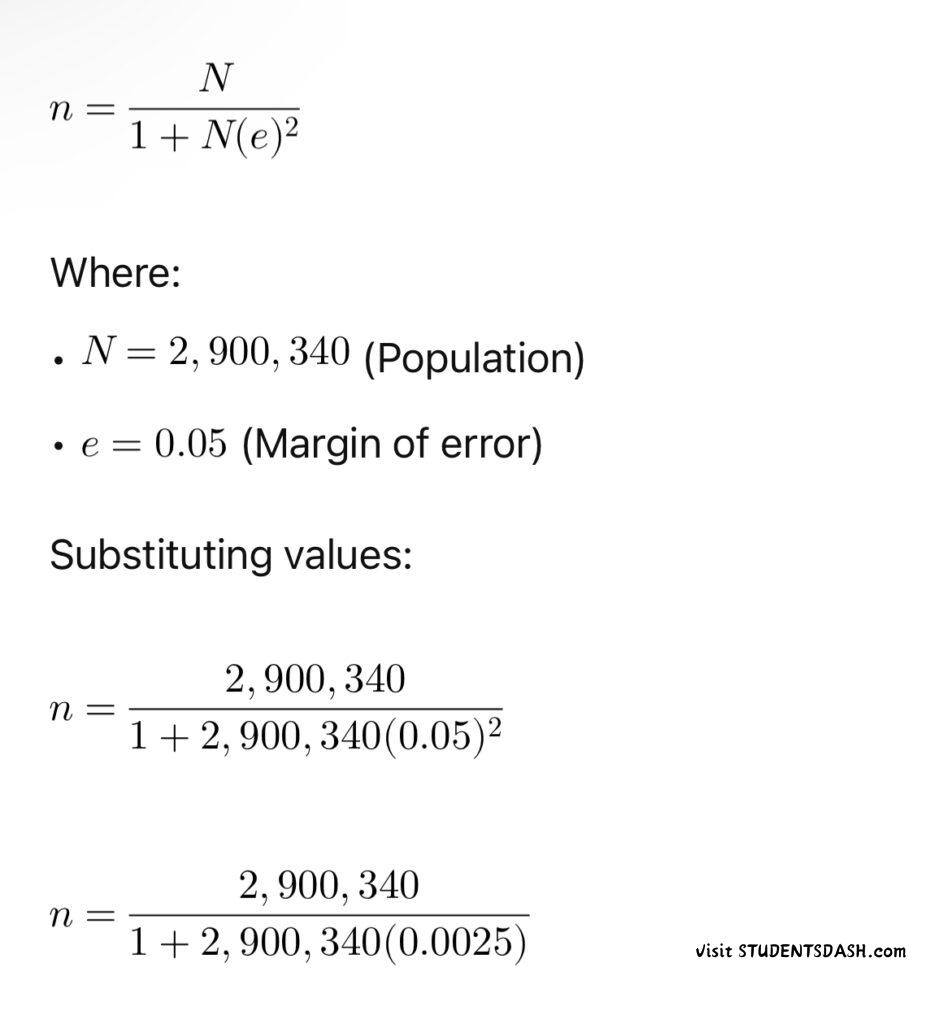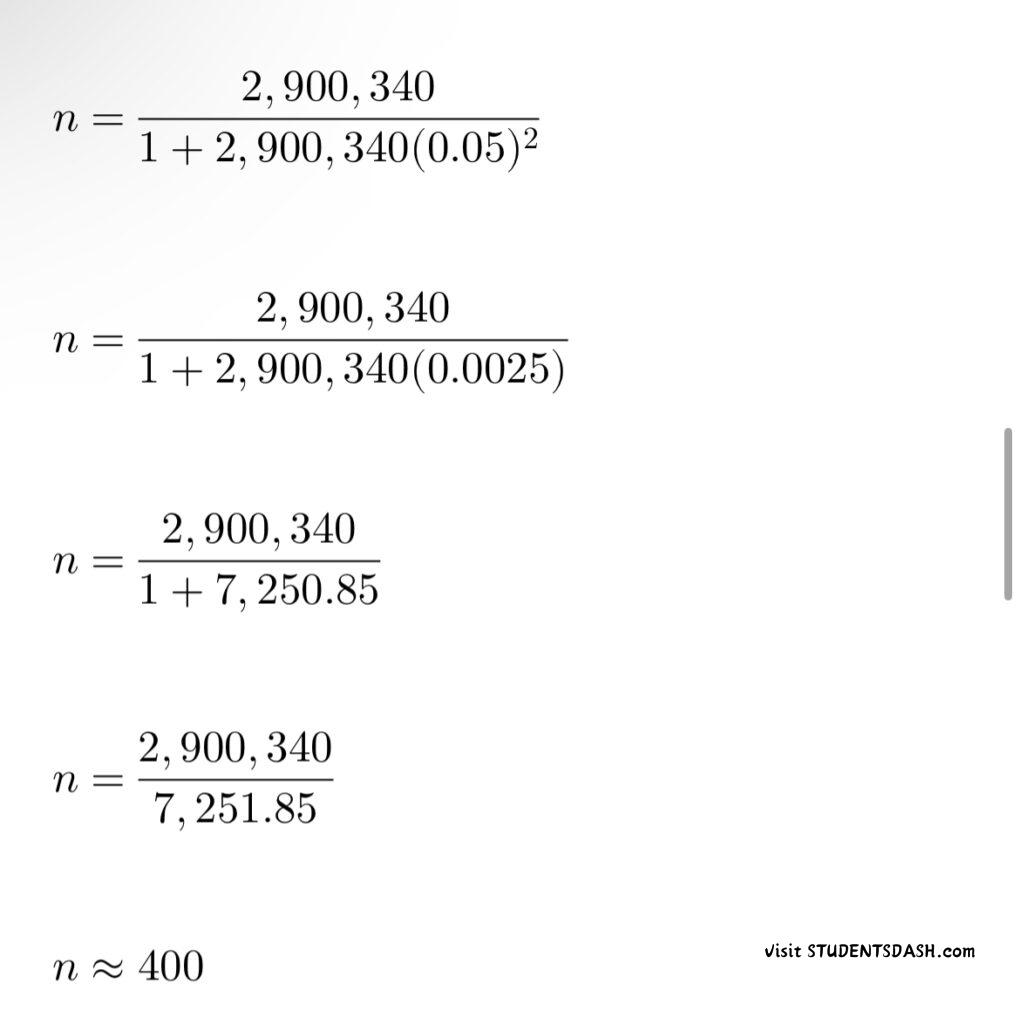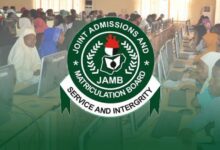
ANSWER TO QUESTION 1
a. Steps for Carrying Out the Study
To conduct the study on “Role of radio in the campaign against street drugs (Mkpulumma and Colos) among youths in Ebonyi State: A study of Salt FM Abakaliki,” the following steps should be followed:
1. Identification of Research Problem: Clearly define the problem by examining how radio influences youths in drug-related campaigns.
2. Review of Related Literature: Gather and analyze past studies on the topic to understand existing knowledge gaps.
3. Formulation of Research Objectives and Hypotheses: Develop measurable objectives and hypotheses based on the study’s focus.
4. Research Design and Methodology: Decide on the research approach (quantitative, qualitative, or mixed methods), data collection methods, and sampling techniques.
5. Population and Sample Selection: Identify the study population (Ebonyi youths) and determine the appropriate sample size using a statistical formula.
6. Instrument Design and Validation: Develop questionnaires or interview guides and validate them through pilot studies.
7. Data Collection: Administer the research instruments and collect data from selected respondents.
8. Data Analysis and Interpretation: Use statistical tools to analyze collected data and interpret the results in line with research questions.
9. Presentation of Findings: Report findings using tables, charts, and narratives.
10. Conclusion and Recommendations: Summarize key findings, conclude the study, and provide recommendations for future research and policy implementations.
b. Sample Size Determination using Taro Yamane Formula
The Taro Yamane formula for sample size determination is:


Thus, the appropriate sample size for the study is approximately 400 respondents.
c. Research Objectives, Questions, and Hypotheses
Research Objectives:
1. To examine the influence of Salt FM Abakaliki’s radio campaigns on youth perception of street drugs.
2. To assess the effectiveness of radio programs in discouraging drug use among youths in Ebonyi State.
Research Questions:
1. How does Salt FM Abakaliki’s campaign influence youth perception of street drugs?
2. How effective are radio programs in discouraging drug use among Ebonyi State youths?
Alternate Hypotheses:
1. H₁: Salt FM Abakaliki’s campaign has a significant influence on youth perception of street drugs.
2. H₁: Radio programs are effective in discouraging drug use among Ebonyi State youths.
d. 15-Item Multiple-Choice Questionnaire
Section A: Demographics
1. What is your age?
• a) 15-20
• b) 21-25
• c) 26-30
• d) 31 and above
2. What is your gender?
• a) Male
• b) Female
• c) Others
3. What is your highest level of education?
• a) Secondary school
• b) OND/NCE
• c) HND/B.Sc
• d) Postgraduate
4. What is your occupation?
• a) Student
• b) Trader
• c) Civil servant
• d) Others
Section B: Substance of the Study
5. Have you ever listened to a radio program about drug abuse?
• a) Yes
• b) No
6. How often do you listen to Salt FM Abakaliki?
• a) Daily
• b) Occasionally
• c) Rarely
• d) Never
7. Do you think radio programs can change youth attitudes toward drugs?
• a) Strongly agree
• b) Agree
• c) Disagree
• d) Strongly disagree
8. Which of these radio campaigns have you heard about drug abuse?
• a) Drug-Free Ebonyi
• b) Youth Against Drugs
• c) Say No to Mkpulumma & Colos
• d) None
9. Have you taken drugs such as Mkpulumma or Colos before?
• a) Yes
• b) No
10. If yes, did a radio program influence your decision to stop?
• a) Yes
• b) No
11. Which media do you think is most effective in drug abuse awareness?
• a) Radio
• b) Television
• c) Social media
• d) Newspapers
12. What do you think is the major cause of drug abuse among youths?
• a) Peer pressure
• b) Unemployment
• c) Family issues
• d) Media influence
13. How would you rate the effectiveness of Salt FM’s anti-drug campaigns?
• a) Very effective
• b) Moderately effective
• c) Not effective
14. Do you think more radio programs should be used for drug awareness?
• a) Yes
• b) No
15. Would you recommend radio campaigns as a primary strategy for reducing drug abuse?
• a) Yes
• b) No
e. APA 7th Edition Citation of the Article
In-text citation:
(Ogbodo, 2021)
Reference list entry:
Ogbodo, J. I. (2021). Mixing nonsense with substance: Negotiating satirical and investigative journalism hybrid genre in Nigerian publishing. African Journalism Studies, 2(4), 137-152.
2
ANSWER TO QUESTION 2
a. Steps for Conducting the Study
To conduct the study on “Newspaper framing of Mmesoma fake UTME result saga: A content analysis of The Punch and Daily Sun,” the following steps should be followed:
1. Identify the Research Problem: Establish the relevance of the topic by analyzing how newspapers framed the Mmesoma fake UTME result saga.
2. Review of Related Literature: Examine existing studies on newspaper framing and media coverage of similar issues to identify gaps.
3. Formulate Research Objectives and Questions: Develop specific objectives and research questions to guide the study.
4. Select Research Design and Methodology: Choose content analysis as the research design, define content categories, and decide on coding units.
5. Define the Population and Sampling Technique: Identify all newspaper articles published on the topic within the selected period and determine the sampling technique (e.g., purposive sampling).
6. Develop the Coding Guide: Establish coding categories (e.g., positive, negative, neutral framing) and operational definitions for consistency.
7. Conduct Pilot Study: Test the coding guide with a small sample to ensure reliability and consistency.
8. Data Collection: Analyze relevant newspaper articles from The Punch and Daily Sun within the selected timeframe.
9. Data Analysis and Interpretation: Use descriptive statistics to analyze frequency and patterns of newspaper framing.
10. Discussion of Findings: Compare findings with existing literature and provide explanations for observed trends.
11. Conclusion and Recommendations: Summarize key findings and suggest improvements in media framing practices.
⸻
b. Determining the Unit of Analysis
The unit of analysis refers to the specific elements to be studied within the newspaper content. Since the period of study is 4 months, the unit of analysis can be determined as follows:
1. Identify Relevant Newspaper Articles: Search The Punch and Daily Sun archives for all articles related to the Mmesoma fake UTME result saga.
2. Categorize Articles by Publication Dates: Select all articles published within the chosen 4-month timeframe.
3. Break Down the Content into Smaller Units: The unit of analysis could be:
• Entire articles
• Paragraphs
• Headlines
• Images/captions
4. Choose the Most Suitable Unit: Since the study is on newspaper framing, the best unit of analysis would be headlines, lead paragraphs, and full articles related to the saga.
⸻
c. Sample Size Determination Using Constructed and Manifest Content Formats
• Constructed Content Format: Involves selecting specific newspaper issues systematically (e.g., picking two newspapers per week over four months).
• Manifest Content Format: Involves analyzing all visible content directly related to the topic within the selected period.
Sample Size Calculation:
• Assuming an average of 5 relevant articles per week from both newspapers, for 4 months (16 weeks):
• Total articles = 5 × 16 = 80
• Sample selection: A systematic or purposive sampling technique can be used to select a representative 50% of the total articles (i.e., 40 articles).
⸻
d. Calculating Inter-Rater Reliability
Inter-rater reliability (IRR) is calculated using Cohen’s Kappa formula or Percentage Agreement formula:

Thus, the inter-rater reliability is 69.2%, indicating moderate agreement between the coders.
⸻
e. Can the Topic Be Effectively Studied Using Content Analysis?
Yes, content analysis is an appropriate method for studying the topic. Reasons include:
1. Media Framing Analysis: Content analysis helps to identify how newspapers portray events—whether in a positive, negative, or neutral tone.
2. Quantifiable Data: It allows researchers to measure the frequency of specific frames (e.g., victim-blaming, investigative reporting).
3. Comparative Study: It enables a comparison of framing patterns between The Punch and Daily Sun over time.
4. Unobtrusive Method: Since content analysis examines existing articles, it does not require interaction with respondents, reducing bias.
5. Replicability: The study can be replicated in future research to assess trends in media framing of similar issues.
⸻
Final Thoughts
This study effectively applies content analysis to evaluate how Nigerian newspapers framed the Mmesoma fake UTME result saga, offering insights into media bias and framing patterns.
3
ANSWER TO QUESTION 3
a. Defending the Assertion: “Research is to see what everybody else has seen, and to think what nobody else has thought.”
This statement means that research is not just about looking at things but thinking about them in a new way. Many people see the same things every day, but only researchers ask deep questions and find new ideas from them.
For example, before Isaac Newton, people saw fruits fall from trees, but he asked why they fall and discovered gravity. In the same way, people read newspapers, but a researcher can study how newspapers report news and find out if they are biased or not.
1. Research Helps Us Discover New Things
• Science and Medicine: Doctors and scientists study diseases and develop cures instead of just watching people fall sick.
• Media and Communication: Researchers study how newspapers report events and if they are fair or one-sided.
• Business and Society: Economists study how people spend money and what affects the economy.
2. Research is About Asking the Right Questions
Many people see problems but do not ask questions about them. A good researcher thinks differently and tries to find answers that others may not have thought about.
3. Conclusion
This statement means that research is about looking at the world differently. Instead of just accepting things the way they are, researchers try to understand why things happen and how to improve them.
b. Explanation of Research Methods
i. Survey Research
What is it?
Survey research is a method where a researcher asks people questions to gather information. It is commonly used in studies about people’s opinions, behaviors, or experiences.
How it Works with Sampling and Instruments:
• Sampling: Researchers cannot ask everybody, so they select a group of people (sample) that represents the whole population. They may use random selection or choose people based on certain characteristics.
• Instruments: The main tool used is a questionnaire, which contains questions for people to answer. These can be yes/no questions, multiple-choice, or open-ended questions.
Example:
If a researcher wants to study how students feel about the Mmesoma UTME saga, they can give a questionnaire to 100 students from different universities and analyze their answers.
ii. Content Analysis
What is it?
Content analysis is a method used to study media content (newspapers, TV, social media, etc.). It helps researchers find patterns in how information is presented.
How it Works with Sampling and Instruments:
• Sampling: The researcher picks a number of articles or news reports that are related to the topic. For example, they may select all newspaper articles about Mmesoma within a 4-month period.
• Instruments: The main tool is a coding sheet, which is used to record how many times certain words, themes, or ideas appear in the news.
Example:
If a researcher wants to study how The Punch and Daily Sun framed Mmesoma’s case, they can count how many times the newspapers used words like “fraud”, “mistake”, or “victim”.
iii. Mixed Methods
What is it?
Mixed methods research means using both survey research (asking people questions) and content analysis (studying media content) to get a better understanding of a topic.
How it Works with Sampling and Instruments:
• Sampling: The researcher can use a mix of survey sampling (selecting people to answer questions) and content sampling (selecting newspapers or TV reports to analyze).
• Instruments: The researcher uses both questionnaires (for surveys) and coding sheets (for content analysis).
Example:
A researcher studying the Mmesoma UTME saga can:
1. Use surveys to ask students if they think the media was fair to her.
2. Use content analysis to check if newspapers used negative or positive words in their reports.
3. Combine the results to get a complete understanding of the media framing.
Final Thoughts
These three research methods help researchers collect information, analyze patterns, and understand how events are reported. The choice of method depends on the research topic and the type of data needed.
4
ANSWER TO QUESTION 4
a. Content Categories
Content categories are the different groups or themes used in content analysis to classify information. When researchers analyze media content (e.g., newspapers, TV programs, or social media posts), they divide the content into specific categories based on the topic being studied.
Example: If a researcher is studying how newspapers reported the Mmesoma UTME saga, they may create categories like “fraud,” “victim,” “investigation,” and “public reaction” to organize the information.
⸻
b. Unit of Analysis
The unit of analysis is the main thing a researcher is studying in a research project. It can be individuals, groups, organizations, events, or media content.
Example:
• If a study is about students’ opinions on UTME exams, the unit of analysis is students.
• If a study is analyzing newspaper articles, the unit of analysis is each article.
The unit of analysis helps researchers focus on what exactly they are measuring.
⸻
c. Interview Guided
An interview-guided research method is a type of data collection where the researcher uses prepared questions to guide a discussion with participants. It can be structured (fixed questions), semi-structured (flexible questions), or unstructured (free discussion).
Example: If a researcher wants to understand how journalists reported the Mmesoma saga, they can interview newspaper editors and reporters to ask them about their experiences and decision-making processes.
⸻
d. Research Philosophy
Research philosophy refers to the beliefs and assumptions that guide a researcher’s approach to studying a topic. It helps determine how data is collected, analyzed, and interpreted.
There are different types of research philosophies, such as:
• Positivism – Believes research should be based on facts and numbers (scientific approach).
• Interpretivism – Focuses on understanding people’s experiences and perspectives (qualitative approach).
• Pragmatism – Uses a mix of both methods depending on the research problem.
Example: A study on newspaper framing of Mmesoma can use interpretivism to analyze how different newspapers presented the story and the meanings behind their words.
⸻
e. Documentation in Research
Documentation in research refers to keeping records of all sources, data, and findings during a study. It ensures that research is organized, transparent, and verifiable.
Researchers document their work by:
• Keeping notes from interviews or surveys
• Saving media content used in content analysis
• Citing books, articles, and websites properly
• Writing a research report with full details
Example: If a researcher studies newspaper framing of Mmesoma, they must document all articles analyzed, interview transcripts, and citations used to support their findings.
⸻
Final Thoughts
These research terms help guide how studies are conducted, ensuring that information is properly collected, analyzed, and documented.


